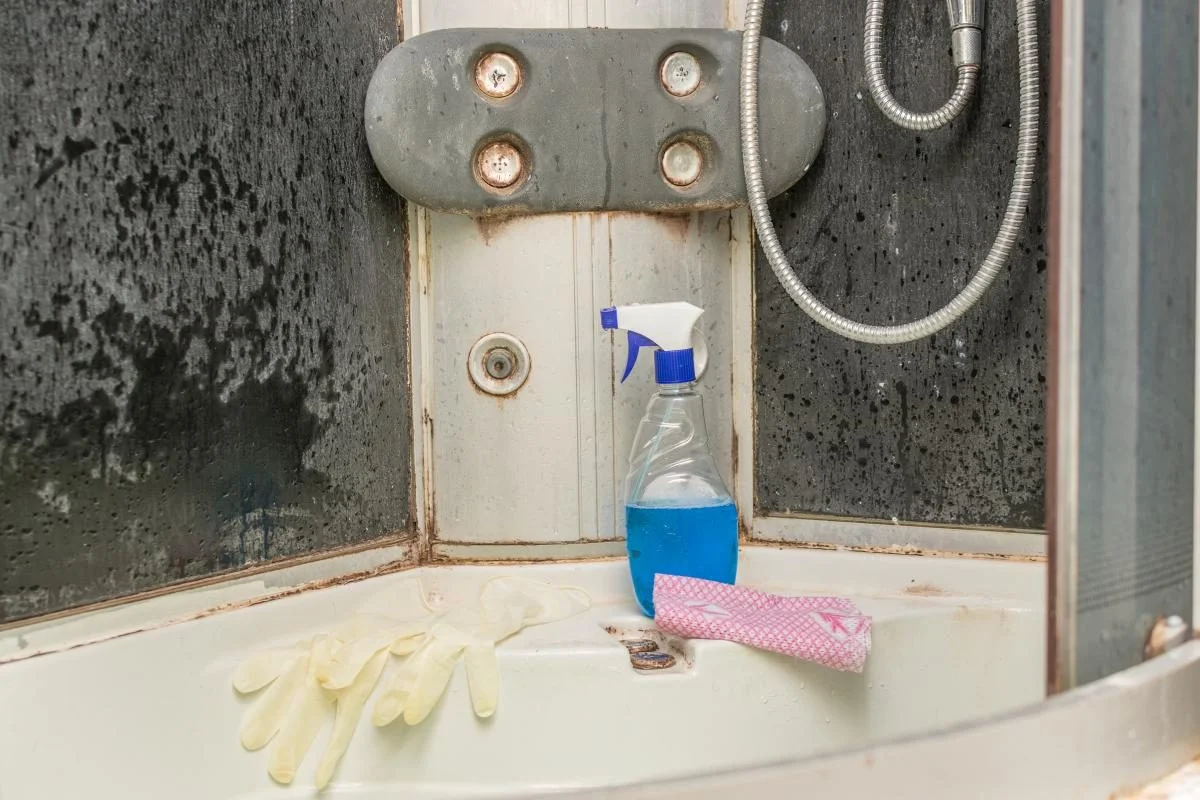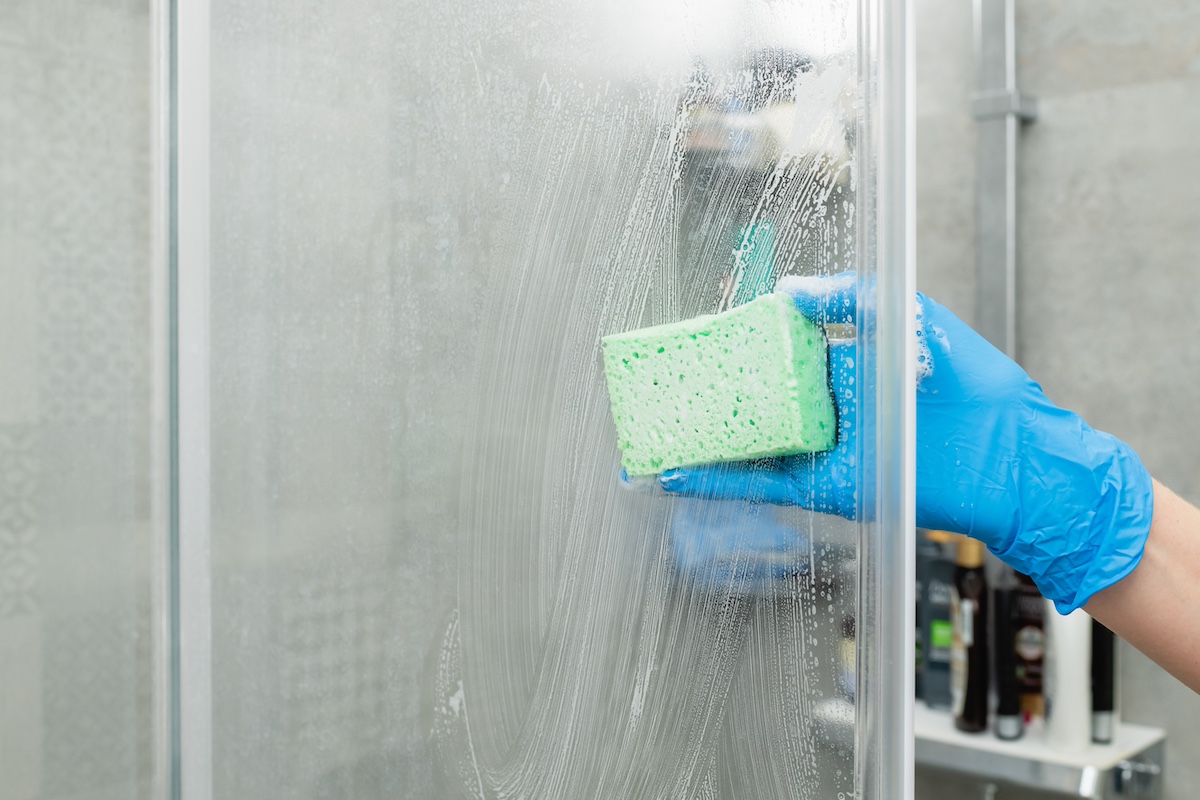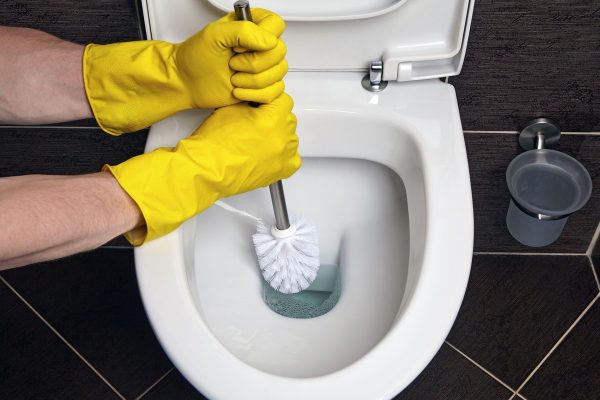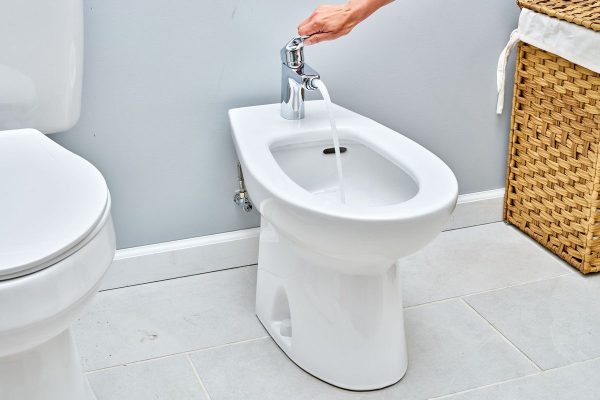Hydrogen peroxide is a natural and powerful cleaner and disinfectant. It kills bacteria and fungi and removes stains, mildew, and soap residue, just as bleach does, but without the harsh chemicals. There are many ways to increase its effectiveness by adding baking soda or letting it sit longer in the dark.
No one wants a shower filled to the brim with soap scum or mildew. Luckily, cleaning a shower with hydrogen peroxide, a natural disinfectant, will not only remove these pesky residues, but it will also help keep your bathroom free of mold, bacteria, and other pesky residues.
Ahead, we share expert tips from professional cleaners on how to clean with hydrogen peroxide and keep your bathroom shiny and bright.
How to Clean a Shower With Hydrogen Peroxide
Follow these simple steps to clean your shower with this powerful natural disinfectant.
- Start with a spray bottle. Michael Williams, a cleaning professional and the owner and CEO of Michael’s Cleaning, starts with a 3% hydrogen peroxide solution in a spray bottle—no dilution needed. Start cleaning by spraying the shower glass, floor, and walls, letting the mixture sit for at least 10 minutes so it has sufficient time to break down grime and kill any bacteria.
- Grab a brush. Next, brush the surfaces with a non-abrasive scrub brush or a microfiber cloth, focusing on edges and grout lines, Williams says. With the brush in hand, make circular motions on the surfaces, breaking up any chalky residues and removing bacteria.
- Rinse it off with water. Finally, rinse your entire shower with warm water and dry the surfaces with a new towel to prevent water spots.
Why Is Hydrogen Peroxide So Effective?
Hydrogen peroxide cleans great because of its oxidizing properties—meaning it kills bacteria, viruses, and fungi by destroying their cells. Plus, it’s highly adaptable and can be used in various cleaning tasks, making it one of the most powerful, low-cost shower cleaners you’ll ever own.
How to Remove Soap Scum and Mildew in the Shower With Hydrogen Peroxide
Removing soap scum and mildew with hydrogen peroxide can take a little extra effort. For soap scum, Williams likes to spray peroxide directly on it and then spread a light layer of baking soda over the top.
“The fizzing breaks the film loose, so scrubbing is comparatively easy,” he says.
For the mildew, he soaks a cotton pad or paper towel with hydrogen peroxide. Then he lays it on the stained grout or silicone caulk, letting it sit for 30–60 minutes. Afterwards, he removes the pad and uses a hard-bristled brush to scrub the surfaces, which pulls the mildew off the shower.
“It’s a more targeted, intentional way of attacking tough areas without having to use bleach,” he adds.
Best Tips for Using Hydrogen Peroxide to Clean a Shower
Here are the experts’ most helpful and little-known tricks.
Hydrogen Peroxide Works Better in the Dark
Conventional wisdom suggests cleaning in the warm heat of natural sunlight to kill bacteria and other microorganisms. But according to Williams, light causes hydrogen peroxide to break down faster, which is why it’s sold in brown bottles. Thus, if you like maximum cleaning power, he recommends spraying your shower before you sleep, allowing it to sit overnight with the bathroom light turned off. Then, when you wake up, scrub and rinse the cleaner.
“It makes a tiny difference in time, but it means a gigantic difference in how well hydrogen peroxide performs on mold, mildew, and soap scum,” he says.

Always Rinse With Warm Water
Hydrogen peroxide is a great cleaner for stains because it lifts them without being harsh or damaging to your grout, as bleach is. In fact, using hydrogen peroxide is the right way to.
clean shower grout. But you still always want to rinse well with warm water whenever you use hydrogen peroxide, says Scott Schrader, cleaning expert at CottageCare.
This is because warm water allows the cleaner to act more effectively against the substances it’s removing—in some cases, living organisms, like bacteria, which you want to further sanitize against with the warm water.
Make Sure the Hydrogen Peroxide Sits Long Enough
Hydrogen peroxide needs contact time to sanitize and bleach, so don’t rush through the cleaning process by hastily wiping hydrogen peroxide away.
“If you’re treating it like a hit-and-run spray-and-wipe cleaner, you’ll be missing out on its total capability,” says Williams.
Schrader agrees. He suggests letting the cleaner sit at least 10 minutes before rinsing away any lingering residue, which will also prevent any new growth or any water spots that could appear the next time you use your shower.
Mix in Baking Soda to Increase Effectiveness
Another way to maximize hydrogen peroxide’s cleaning potential is to add a dose of baking soda.
If you find yourself with a high degree of soap scum build-up and scrubbing does not seem to budge it, then you can also try mixing hydrogen peroxide with a small amount of baking soda to form a paste, says Schrader. Apply the paste to the areas of concern, let it sit for an hour, then scrub and rinse.





